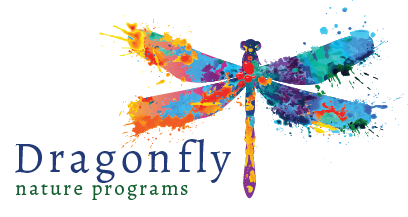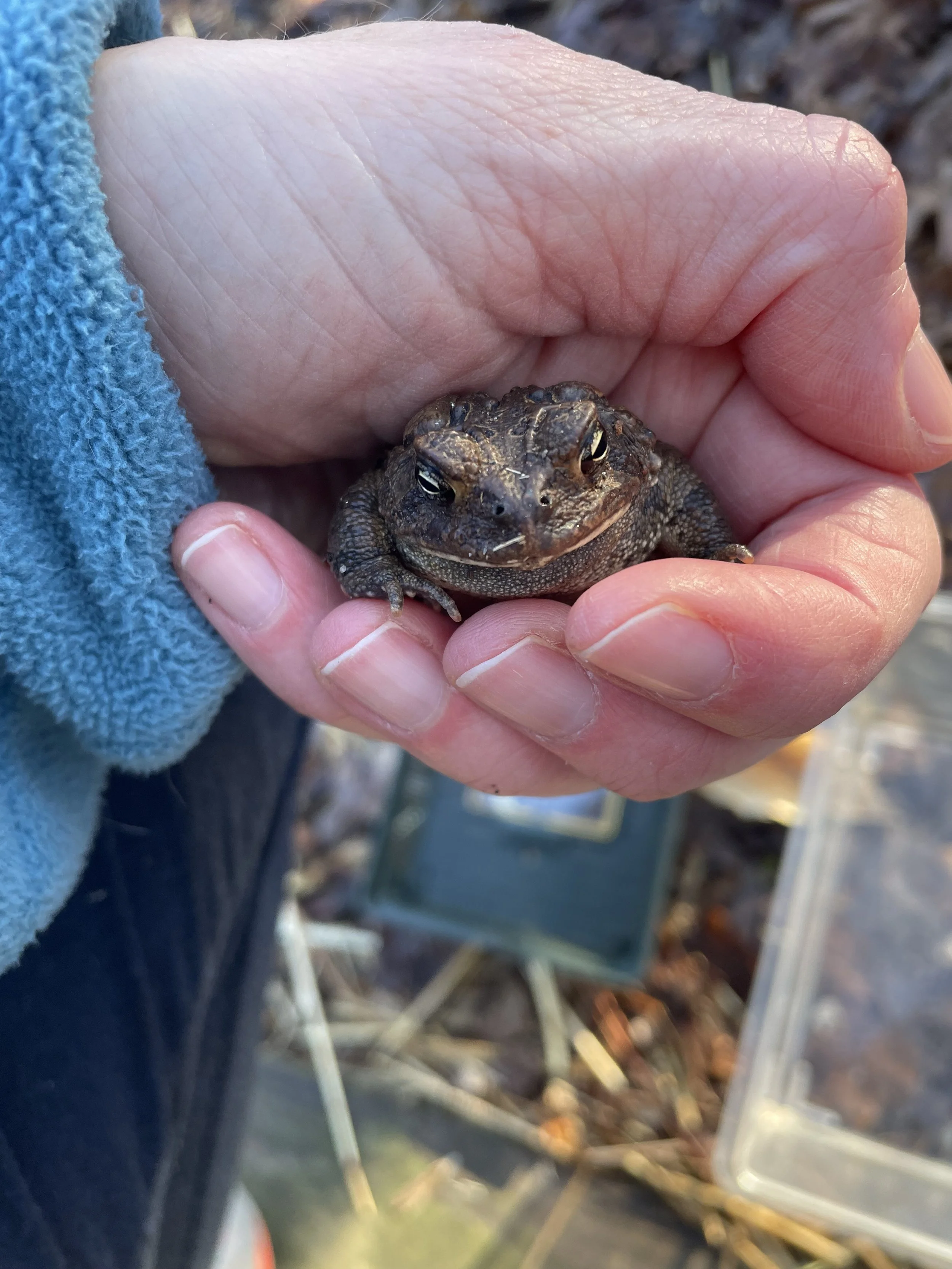We had a snowstorm, followed by a warm spell, followed by a hard freeze this past February (2025).
On my morning walk, bundled appropriately in a hat, gloves and a fuzzy coat, I spotted an odd form on the sidewalk. Pitted from age and green from mossy growth, the concrete was also dark and wet after the previous night's rains that brought the cold snap, so I wasn’t expecting to find an American Toad (Anaxyrus americanus). But there he was, splayed out on the cold concrete, looking more like a piece of bark than an animal, nearly perfectly camouflaged. I gave him a nudge to check for life. He weakly returned a leg twitch. I turned him over to check for injury. He seemed whole, but he was cold.
Cold-blooded animals like amphibians and reptiles do not expend energy to heat their bodies like we mammals do (and birds). My winter wear trapped the heat my body produced on my walk. The toad’s little form lay nearly lifeless, he was as cold as the wet concrete on a winter’s day, but he wasn’t dead. So I gingerly scooped him up into my ungloved hand and walked him home.
Note to reader: cold-blooded animals survive cold spells and American Toads breed between February-April here in NC. It’s possible the rain triggered this individual to seek out vernal pools for nocturnal egg-laying fun! To survive the cold, toads shelter under logs, leaves or in a burrow. Frogs do the same or hang out at the bottom of a pond, sheltered by the insulating ice on the surface, breathing through their skin. My concern for this animal, at this moment in time, was he stuck on a busy sidewalk, frozen inactive until the day, the concrete and his body slowly warmed. I imagined bike tires, curious dogs, clumsy footfalls and even cruel humans passing by and causing harm (intentionally or unintentionally).
In my cold hand, against my fuzzy coat, he closed his eyes, as if resigned to his fate. I imagined him thinking, “I’m too cold to care what happens next.”
Upon entry into my home, I watched his vocal sac expand and contract. His respiratory rate was picking up. He opened his eyes. He shuffled lightly in my hand.
I wasn’t terribly sure how long he’d been inactive on the concrete, the true state of his health or exactly when to restore him outdoors, but I figured I would keep an eye on him for a little while. Equipped with critter cages, water bowls, cage substrate and a compost bin full of worms, he was set up in a comfortable habitat for the next couple of hours. I set his plastic bin on my seed-heaters for some artificial warmth. Eventually he made his way to the water dish, where he soaked and waited for release.
The next day, during the heat of the afternoon, he was relocated to my backyard where leaves are plentiful, logs lie here and there, stick piles act as nurseries for toad food (insects and their larvae) all of which are pesticide free. We even have a small pond. He spritely hopped right out of my hand and immediately sought cover under the perennial plants near the pond.
When Duty Calls
What should kind humans do when they see wild animals in need?
It should be understood that oftentimes, animals don’t need our help. If that same toad was found in my backyard, in the leaves, cold and immobile, I’m not sure I would have intervened. If a lucky predator (like a warm-blooded bird) happened to catch him in his state of vulnerability, that’s the cycle of life. But seeing how his life was at risk due to where he was located, I thought acting was better than not.
And if where he had been found was a lush landscape of cover with a water source and therefore, likely food, I would have returned him there after he was rehabilitated. Knowing I had the resources for his support at hand, I felt comfortable relocating him away from an area that didn’t have the same habitat needs toads require.
Important Note: Some animals cannot and should never be relocated, box turtles for one. They are loyal to their territory and will never rest until they find their way back home, which could mean they die trying to return. Get him out of a road, but don’t drive him to a site you feel is better. It isn’t.
There are animals who will leave young unattended to go find food. White tailed deer are one. A sleeping fawn is not necessarily abandoned. It is waiting for a well fed mom to return. You should leave the fawn alone, and this is the same for the majority of situations involving nesting birds and other suburban mammals.
I’ll also mention that a wild animal should never be considered a pet. They aren’t yours to take! Keeping and feeding a wild animal for a day, just long enough to watch and learn is one thing but capturing to keep is another. And if you do want to keep an animal for a class lesson (check out this post “Learning Cycle” about best practices) or for a fun activity with children at home, you must provide it with shade, warmth, unchlorinated water, appropriate food and an appropriate cage where all humans and all critters are safe. They should always be returned to the wild.
If you do come across a wild animal in need of medical assistance, search for “wildlife rehabilitator in my area”. There are hardworking and kind souls who can assist you.


